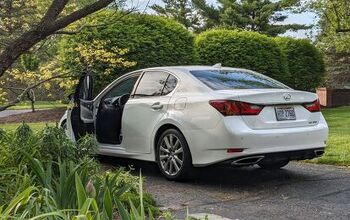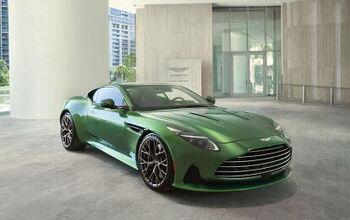Maker of Odd-looking Three-wheeled Car Heads to NASDAQ

A small automobile company headquartered in a city with outrageous house prices wants you to buy shares. Electra Meccanica Vehicles Corp., the Vancouver-based builder of three-wheeled electric vehicles, has announced its listing on the NASDAQ.
The company’s $10 million public offering went live Thursday, listed as SOLO (common shares) and SOLOW (warrants). As you probably figured, Electra Meccanica calls its vehicle the “Solo,” which, as you also probably figured, carries a single occupant.
Looking like all three-wheelers do (strange), the Solo targets the cost-conscious commuter.
With a top speed of 82 miles per hour, a Solo provides a green driver with about 100 miles of emissions-free driving. The first production model rolled off the company’s Chinese assembly line early last month, with consumer testing expected to give way to commercial production in September.
Electra Meccanica inked a production deal with motorcycle maker Zongshen Industrial Group Co., Ltd last year, covering the building of 75,000 Solos over the next three years.
Looking normal from the front wheels forward, the Solo carries a sticker of $15,500 (USD). A refundable deposit of $250 is all it takes to reserve one, and the company says it plans to deliver 5,000 by September of 2019. That cash gets you a 1,488-pound vehicle with a single rear wheel driven by an 82 horsepower electric motor; a 17.3 kWh battery provides the juice. A full charge takes 6 hours at a 110-volt plug, though fast-charging capability exists.
“Electra Meccanica intends to use the net proceeds from this [public offering] for plant and equipment, production molds, sales and marketing and inventory associated with the mass production of its SOLO electric vehicle by Zongshen Industrial Group Co. Ltd., initial deliveries of which are anticipated in the fall of 2018,” the automaker said in a statement. It expects to close the offering on August 13th.
If you’ve followed the Elio Motors saga, you’ll know it’s hard to get a three-wheeled car off the ground. And it’s not just the development and financial elements (in Electra Meccanica’s case, its subsidiary, Intermeccanica, has built low-volume specialty cars for 59 years) — there’s also public perception to think about. While three-wheeled motorcycles are commonplace, adding an enclosed body to such a layout creates a vehicle with jarring proportions. It’s easy to be turned off. As well, many drivers like to have the option of carrying at least one passenger.
Electra Meccanica claims it has thousands of orders for the Solo, however. It sees the Solo’s role as being the ultimate in pint-sized, efficient commuting, and hopes the public offering brings in the cash to turn volume production into a reality.
Should you ever find yourself arriving in Vancouver by seaplane, you’ll have a chance to drive the Solo alongside that city’s crop of high-end exotics. The company recently entered into a ridesharing partnership with the Vancouver Harbour Flight Centre.
[Image: Electra Meccanica]

More by Steph Willems
Latest Car Reviews
Read moreLatest Product Reviews
Read moreRecent Comments
- B-BodyBuick84 Not afraid of AV's as I highly doubt they will ever be %100 viable for our roads. Stop-and-go downtown city or rush hour highway traffic? I can see that, but otherwise there's simply too many variables. Bad weather conditions, faded road lines or markings, reflective surfaces with glare, etc. There's also the issue of cultural norms. About a decade ago there was actually an online test called 'The Morality Machine' one could do online where you were in control of an AV and choose what action to take when a crash was inevitable. I think something like 2.5 million people across the world participated? For example, do you hit and most likely kill the elderly couple strolling across the crosswalk or crash the vehicle into a cement barrier and almost certainly cause the death of the vehicle occupants? What if it's a parent and child? In N. America 98% of people choose to hit the elderly couple and save themselves while in Asia, the exact opposite happened where 98% choose to hit the parent and child. Why? Cultural differences. Asia puts a lot of emphasis on respecting their elderly while N. America has a culture of 'save/ protect the children'. Are these AV's going to respect that culture? Is a VW Jetta or Buick Envision AV going to have different programming depending on whether it's sold in Canada or Taiwan? how's that going to effect legislation and legal battles when a crash inevitibly does happen? These are the true barriers to mass AV adoption, and in the 10 years since that test came out, there has been zero answers or progress on this matter. So no, I'm not afraid of AV's simply because with the exception of a few specific situations, most avenues are going to prove to be a dead-end for automakers.
- Mike Bradley Autonomous cars were developed in Silicon Valley. For new products there, the standard business plan is to put a barely-functioning product on the market right away and wait for the early-adopter customers to find the flaws. That's exactly what's happened. Detroit's plan is pretty much the opposite, but Detroit isn't developing this product. That's why dealers, for instance, haven't been trained in the cars.
- Dartman https://apnews.com/article/artificial-intelligence-fighter-jets-air-force-6a1100c96a73ca9b7f41cbd6a2753fdaAutonomous/Ai is here now. The question is implementation and acceptance.
- FreedMike If Dodge were smart - and I don't think they are - they'd spend their money refreshing and reworking the Durango (which I think is entering model year 3,221), versus going down the same "stuff 'em full of motor and give 'em cool new paint options" path. That's the approach they used with the Charger and Challenger, and both those models are dead. The Durango is still a strong product in a strong market; why not keep it fresher?
- Bill Wade I was driving a new Subaru a few weeks ago on I-10 near Tucson and it suddenly decided to slam on the brakes from a tumbleweed blowing across the highway. I just about had a heart attack while it nearly threw my mom through the windshield and dumped our grocery bags all over the place. It seems like a bad idea to me, the tech isn't ready.


































Comments
Join the conversation
Well - I guess it has more occupant protection than a motorcycle, and it's less expensive new than other electrics. If someone NEVER needs to carry a passenger, and doesn't mind the dorky shape/weird factor, whatever.
A slightly more "car"ry Peel P50?